Street View has come a long way in 13 years during which time 360 camera technology has seen significant advancements too.
It’s hard to believe that Google Street View has been around for 13 years now, after launching in several cities in the United States - San Francisco, New York, Las Vegas, Miami and Denver - on May 25, 2007.
The cameras at that time produced 2.8 megapixel images, which is significantly less than new smartphones on the market today.
But 13 years is a long time in technology.
The first generation of the iPhone was release one month after Street View, on 29 June 2007.
It was then 7 years later, in 2014, that consumer level 360 cameras became mainstream allowing anyone to create true 360 photos with cameras like the Ricoh Theta m15.
6 years on and the market for 360 cameras has increased significantly.
Many of these cameras have been inspired by the work that Google, and their camera suppliers, have produced.
Here’s a look back on the history of the Street View cameras, and a glimpse at the future.
The Street View Camera
2006 - 2007: The Concept
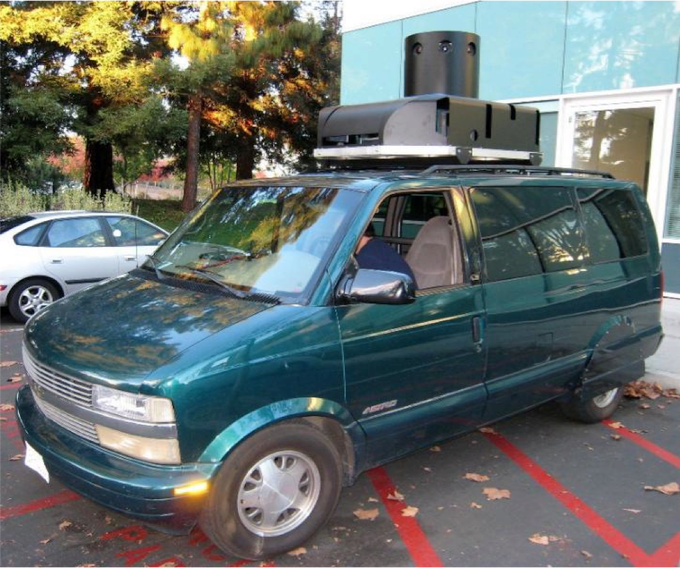
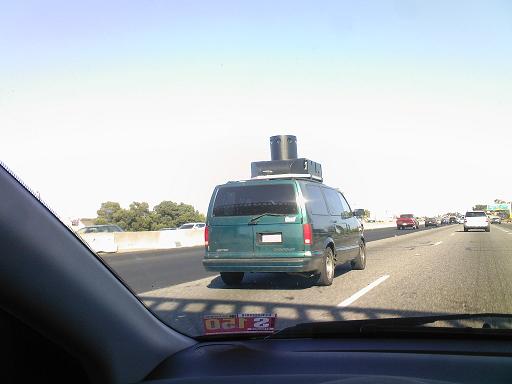
In Street View’s “garage phase”, a Chevrolet van was equipped with side and front-facing laser scanners, two high-speed video cameras, eight high-resolution cameras in a rosette (R) configuration, and a rack of computers recording data to an array of 20 hard drives at 500 Mbytes per second.
The van included special shock absorbers, a custom axle with rotary encoders used for pose optimization, and a heavy-duty alternator from a fire truck.
Enough imagery was captured to create demos, which were deemed sufficiently compelling to enter the next phase of growth.
2007: Dodeca 2360 (Immersive Media)
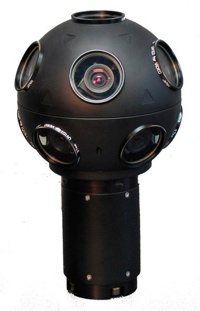
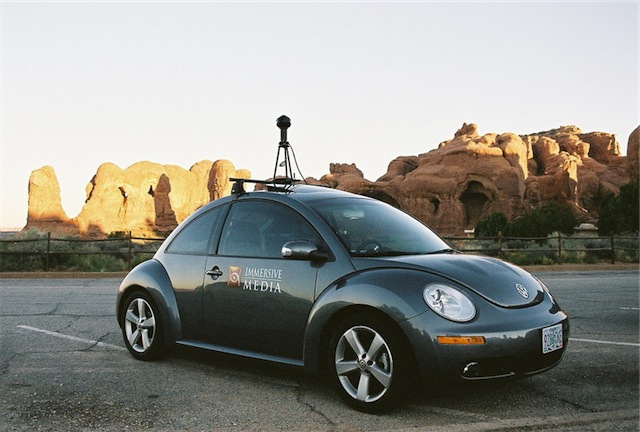
To help speed up the amount of coverage at launch, Google hired a company called Immersive Media to drive the streets using a camera they had developed called the Dodeca 2360.
The Dodeca 2360 camera, mounted to a fleet of VW Beetles, could capture 100 megapixel still images, or record 360 video at 2400 x 1200 (2.8 megapixels) at 30 frames per second.
An early prototype of Google’s Trekker Pack also used the Dodeca 2360.
Estimated cost to buy new at the time (inc. mounting system): $65,000. (Source).
2007: R2
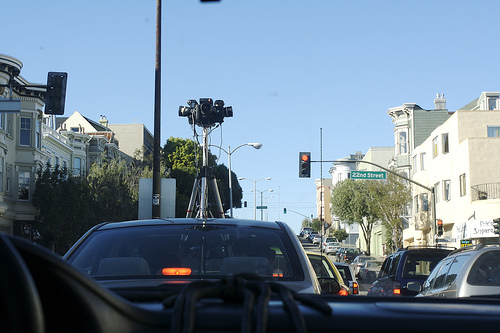
Following the initial engagement with Immersive Media, Google has rolled out it’s own fleet of cars to capture imagery.
The earliest camera on Google’s own cars was the R2, a ring of eight 11 megapixel cameras with commercial photographic wide-angle lenses (with the same specifications as those used for the Google Books project).
2007: Ladybug2 (Point Grey Research now FLIR Systems)
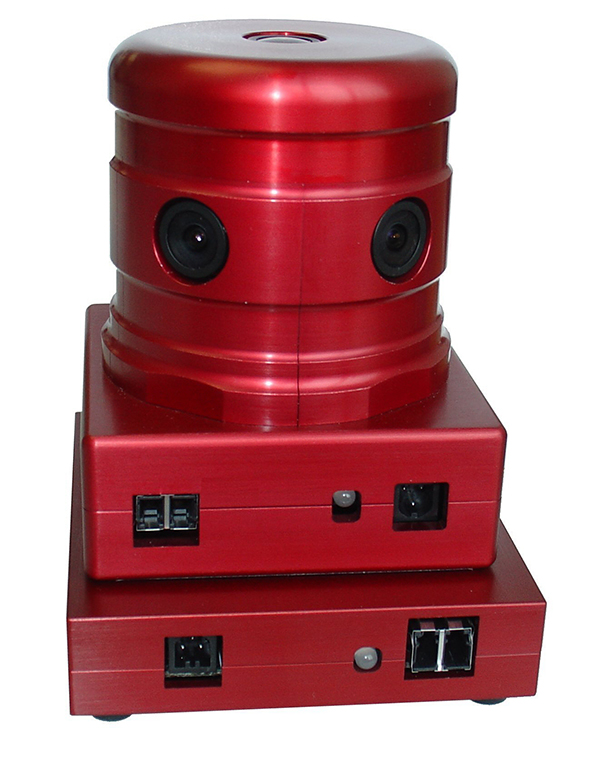
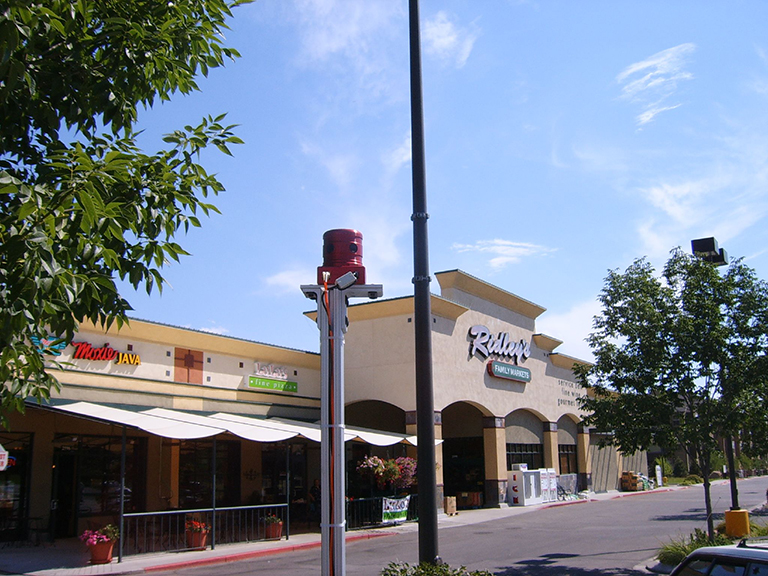
The Ladybug2 camera by Point Grey Research (now FLIR Systems) could shoot video at 30 frames per second at a resoltion of 1024x768 (0.8 megapixels) and capture 4.8 megapixel still images.
The latest FLIR Systems Ladybug camera is the Ladybug5+. Estimated cost to buy new: $19,995. Source.
2008: R5
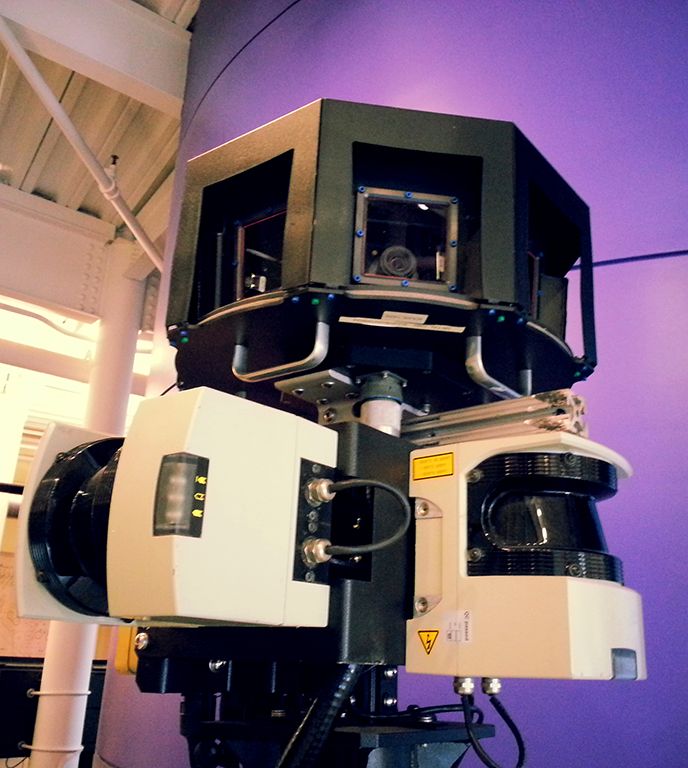
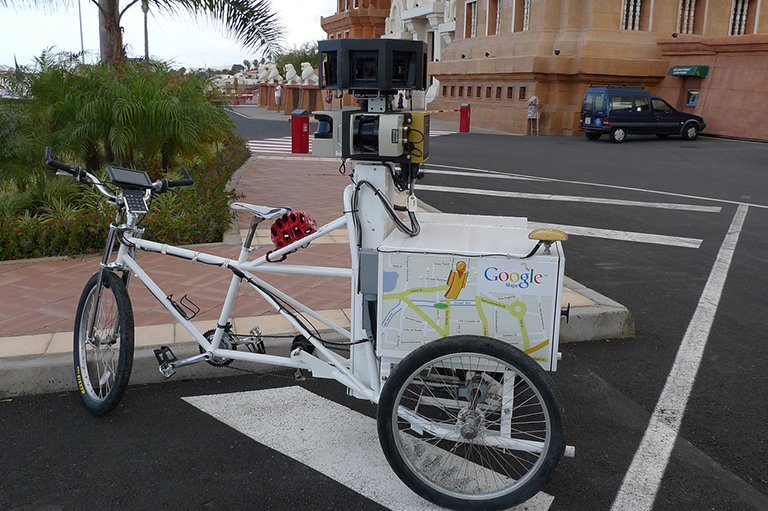
The R5 used a ring of eight small, outward-looking 5-megapixel Ephel cameras using custom, low-flare, controlled-distortion lenses, plus a fish-eye lens on top to capture the upper levels of buildings.
The R5 design also mounted three laser scanners on the mast, thereby enabling the capture of rough 3D data alongside the imagery. Whilst fitted on the original prototype, laser scanners weren’t present on the cars up until the release of the R5.
This was one of the first cameras to be widely mounted to other forms of transport including the Street View Trike and the Street View Snowmobile.
Elphel also produced a camera, the Eyesis, with a very similar design based on open-source hardware and software. The Eyesis has since been superseded by the Elphel Eyesis4Pi.
Cost to buy new (Elphel Eysis): $33,000. (Source).
2010: R7
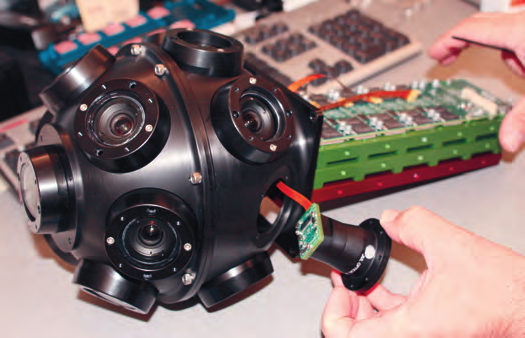
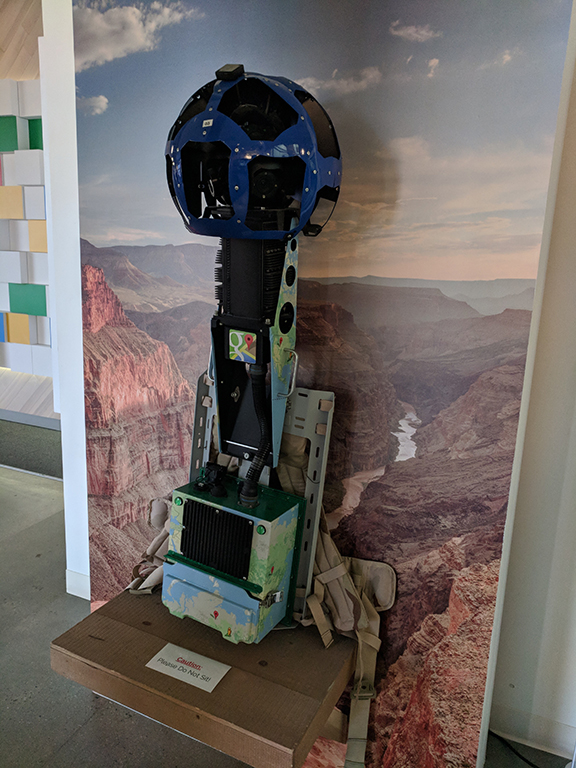
The R7 was the first completely in-house Google built Street View camera, it used 15 of the same cameras and lenses as the R5 (but with no fisheye effect) to obtain high-resolution images over an increased field of view (to see down to sidewalks even on narrow streets).
The first widely available Trekker Pack used the R7 Camera. The 1.2m tall, 20kg backpack camera rig was widely used for capturing off-road imagery under Google’s camera loan program up until 2017.
2017: R?
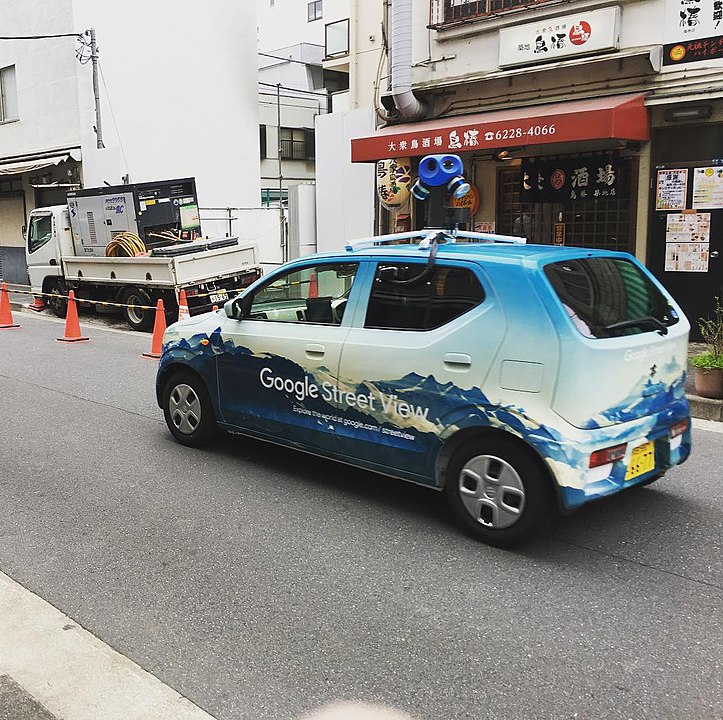
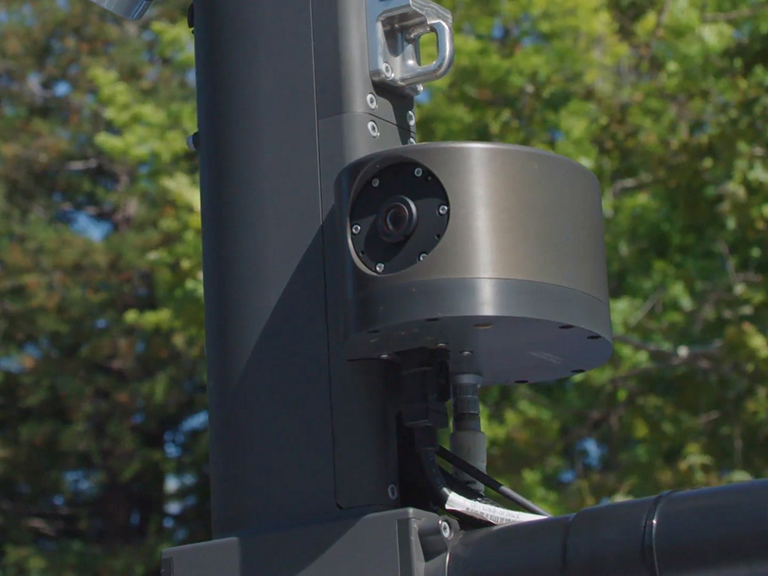
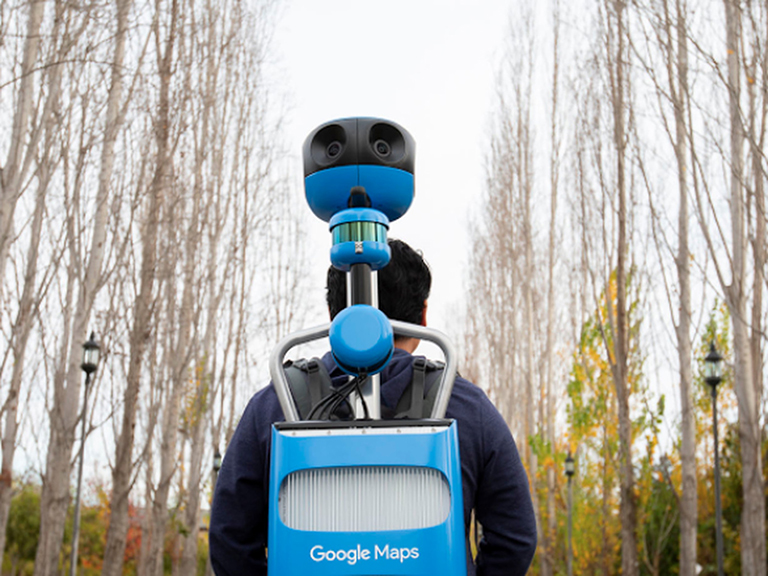
The latest iteration of the Street View Camera, features just seven cameras (down from 15) fitted with 20 megapixel sensors (up from 5).
The rig also hosts a pair of “HD” cameras that face directly left and right. These are dedicated to reading street signs, business names, and even posted store hours for Google Maps.
The camera is also used in the latest, lighter iteration of the Google Trekker Pack.
2007 - 2020: RX
Other generations of rosette camera systems — R1, R3, R4, and R6 — enjoyed a brief experimental existence but weren’t deployed in quantity.
The biggest challenge the Street View team faced was deploying the cameras at scale reliably. To ensure reliability, the widely deployed cameras have had no moving parts, unlike some intermediate designs including the R3 and R4 which used mechanical shutters.
The future
In 2012, there were a reported 250 Street View cars on the road.
Update 2019-12-20: Google has just revealed that Street View has now captured more than 10 million miles of imagery from around the world, a distance which, if driven in a straight line, would circle Earth more than 400 times.
But Google wants more, and they know they won’t be able to do this with their own fleet of (very expensive) cameras alone.
The company is now actively encouraging third-party camera manufacturers to build “Street View Ready” products.
The program is split into two tiers:
- Street View Ready: For cameras and software that meets the minimum Google Maps 360 publishing criteria. Street View Ready products do not need special approval from Google to use the Street View Publish API.
- Street View Ready Pro: For Street View-compatible 360 cameras tailored for in-motion recording with a high degree of accuracy and image quality. To have a product approved as being “Street View Ready Pro” requires evaluation by Google using a set criteria. Those that achieve Street View Ready Pro status have increased access to the Street View platform, including methods to publish 360 photo sequences not available to the general public.
You can view a list of Street View Ready products here.
Trek Pack
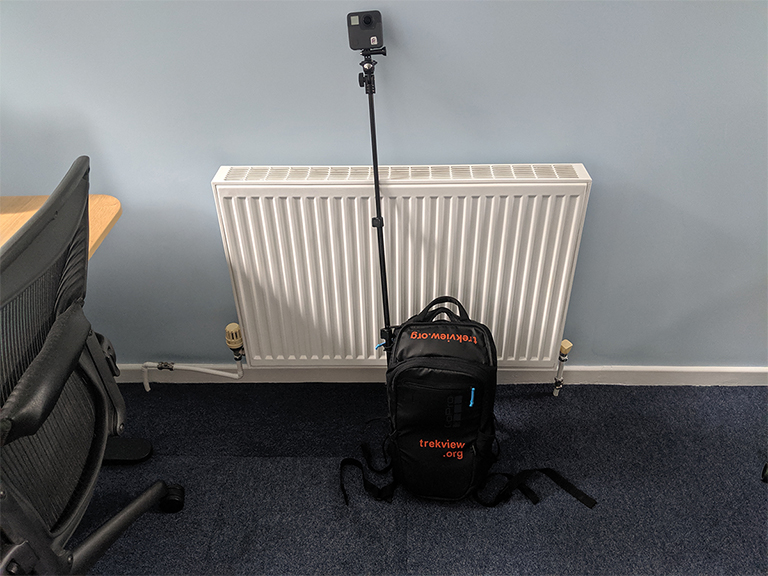
Our Trek Packs are Street View Ready and designed to capture imagery on foot, by bicycle, paddle-boarding and even underwater whilst scuba-diving.
They’re no Google Trekker packs, granted. The upside being; they’re A LOT more affordable and widely available. Find out how to get your hands on one here.
We're building a Street View alternative for explorers
If you'd like to be the first to receive monthly updates about the project, subscribe to our newsletter...


